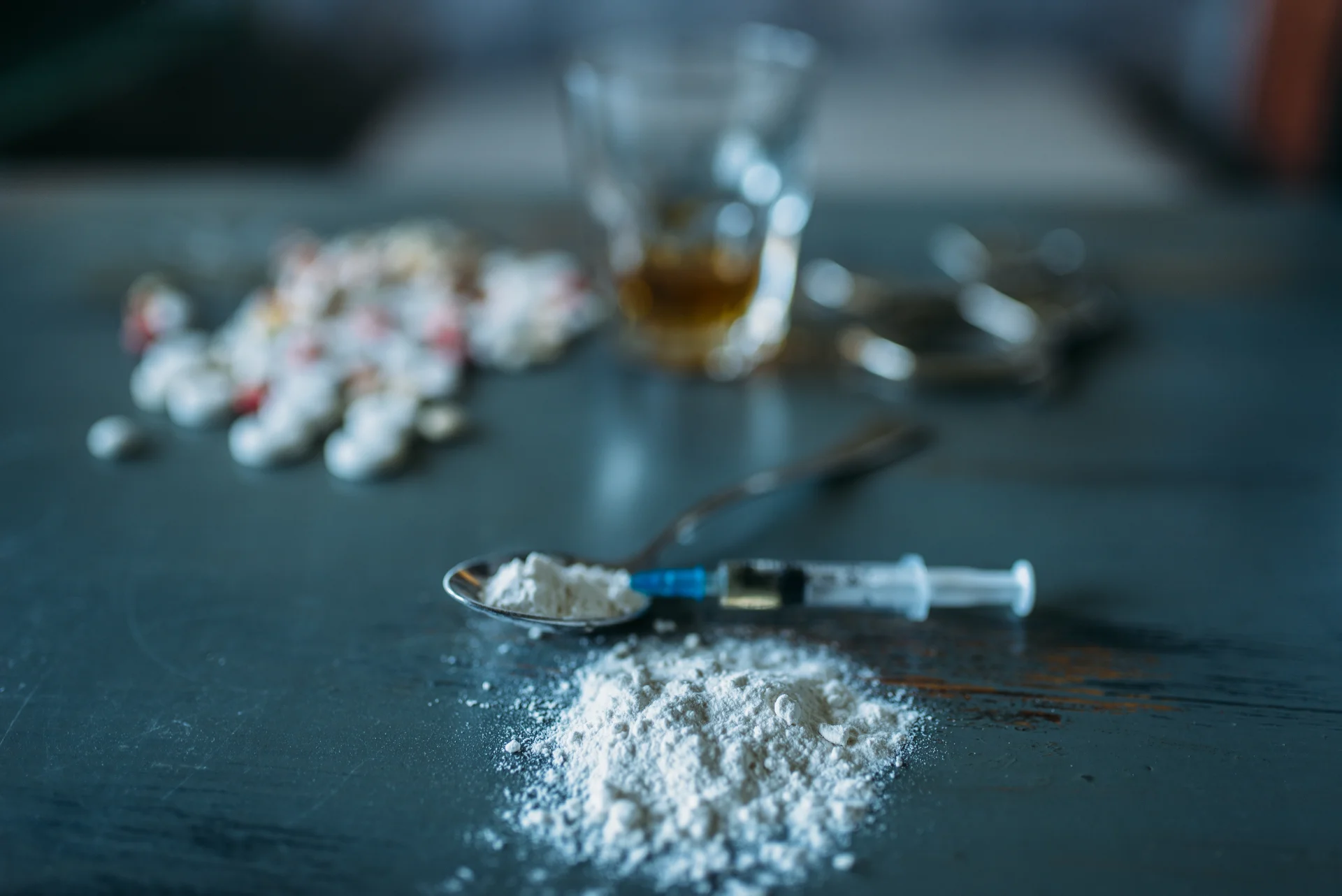Ketamine Addiction Treatment in Long Island
Our Long Island ketamine guide explains medical and non-medical uses, how dependence develops, the short- and long-term risks, detection timelines, local detox and treatment options, recovery therapies, and aftercare strategies
Covered by most insurance plans
Available to help you 24/7
Table of Contents
Ketamine, also known by the brand Ketalar, is an FDA approved anesthetic with emerging off label uses for pain and treatment resistant depression. It also has real misuse potential. Non medical use or unsupervised dosing can lead to tolerance, compulsive use, accidents, and serious health risks. Long Island Addiction Resources is a confidential referral service that helps Nassau and Suffolk residents compare nearby licensed programs that match their needs and insurance. We are not a rehab or medical provider.

What Ketamine Is and How It Is Used
Ketamine is a dissociative anesthetic. In hospital settings it is given by IV or injection for anesthesia and procedural sedation. Under specialist care, carefully dosed ketamine may be used for acute pain, status epilepticus, and for some patients with treatment resistant depression. Take home formulations can include clinic dispensed lozenges under strict protocols. Outside clinical care, ketamine is sometimes diverted as a white powder to be swallowed, snorted, or added to drinks, which raises safety and addiction risks.
How Ketamine Works in the Brain: Mechanisms & Effects
Ketamine primarily modulates the glutamate system by blocking NMDA receptors and secondarily influences opioid and other pathways. At anesthetic doses it disconnects sensory processing and pain pathways. At lower doses it produces dissociation, perceptual changes, and euphoria for some users. In structured therapy, medically supervised dosing plus psychotherapy may help restore synaptic function in mood circuits. The same pharmacology can be destabilizing when dosing is frequent, high, or combined with other substances.
Is Ketamine Addictive
Ketamine can drive psychological dependence and compulsive use. People may chase short lived euphoria with escalating or more frequent doses. Tolerance can build quickly. Some develop patterns of binges followed by crashes with anxiety, low mood, and sleep disruption. Physical withdrawal is typically milder than with opioids or alcohol, but cravings, irritability, and insomnia are common and can sustain the cycle.
Short and Long Term Risks
- Acute effects Confusion, disorientation, impaired judgment, falls, high blood pressure, rapid heart rate, nausea, vomiting. Mixing with alcohol, benzodiazepines, or other sedatives increases risk of dangerous sedation and breathing problems.
- Overdose concerns Near unconscious states, loss of protective reflexes, trauma from accidents, and in severe cases respiratory compromise and medical emergencies.
- Ketamine bladder and urinary tract issues Frequent or heavy use has been linked to painful urination, urgency, incontinence, and potential long term bladder damage.
- Cognitive and mood effects Memory impairment, slowed thinking, derealization, anxiety, and depressive crashes during comedown periods.
How Long Ketamine Stays in the Body
- Onset and duration Effects usually begin within minutes by IV or intranasal routes and last about 30 to 60 minutes. Residual effects and comedown symptoms can persist for many hours.
- Half life Roughly 2 to 3 hours, with active metabolites contributing to lingering effects.
- Detection windows Approximate detection can include saliva up to 24 hours, blood up to several days, urine up to about 2 weeks, and hair for months. Individual factors and dose matter.
Signs of Problematic Ketamine Use
- Using more often or in higher doses than intended or outside medical guidance
- Cravings, planning life around access or use, hiding use from family and friends
- Memory lapses, risky behavior, falls or accidents, new GI or urinary symptoms
- Mood swings, anxiety, insomnia, missing work or school, financial or legal problems
Detox and Early Stabilization on Long Island
Ketamine withdrawal is usually not medically dangerous, but co use with alcohol, benzodiazepines, or stimulants can complicate care. Supervised stabilization reduces risk and improves comfort.
- Medical review Substance history, mental health assessment, vitals, and labs as indicated. Screening for bladder and urinary complications when symptoms are present.
- Symptom management Non addictive medications for sleep, anxiety, nausea, and headaches. Hydration, nutrition, and quiet, low stimulation settings to reduce agitation.
- Safety Counseling on avoiding polysubstance mixtures and on safer strategies while recovery stabilizes.
Levels of Care on Long Island
- Outpatient care Best for stable cases with strong supports. Includes therapy, medication review, and relapse prevention planning.
- Intensive Outpatient Program or Partial Hospitalization Structured daytime therapy several days per week with psychiatry support and skills groups.
- Residential or inpatient Twenty four hour support for severe use, polysubstance patterns, unsafe home settings, or significant psychiatric risk.
Therapies That Help
- Cognitive Behavioral Therapy Identifies triggers, restructures thought patterns, and builds practical coping and relapse prevention skills.
- Dialectical Behavior Therapy skills Emotion regulation and distress tolerance for high arousal states and post use crashes.
- Motivational interviewing Resolves ambivalence, aligns change with values and goals, and strengthens engagement.
- Trauma informed care Addresses trauma related drivers that can fuel dissociative use.
- Family therapy and peer support Communication skills, boundary setting, and accountability through groups and mutual aid.

When Ketamine Is Used Medically
If you are receiving clinic based ketamine for depression or pain, stay within a single prescriber’s plan, attend scheduled integration therapy, avoid alcohol and sedatives, and never self adjust dose. If you notice dose creep, craving between sessions, or use outside clinic protocols, talk with your clinician immediately and consider a pause plus added supports.
Aftercare and Relapse Prevention
- Written plan Early warning signs, if then coping steps, and crisis contacts.
- Routines Consistent sleep, meals, movement, and light exposure to stabilize mood and energy.
- Health follow up Primary care and urology check ins if urinary symptoms were present. Ongoing therapy or skills groups for at least several months.
- Environment Remove paraphernalia, avoid high risk venues, and build a sober support network.
How We Help on Long Island
We listen to your needs, verify insurance, and connect you with licensed programs across Nassau and Suffolk for outpatient therapy, IOP or PHP, residential treatment, medication management, and recovery housing. We are a connector and guide focused on person centered, evidence based care.
Start today
If you or a loved one are ready to end your alcohol and drug use, there are many recovery options available near you in Long Island
Rehab Programs
Are you ready to take back control over your life?
Making the decision to seek help is one of the hardest and bravest steps you can take. We know that the recovery process is not always easy—there may be challenges along the way—but every step forward brings you closer to a life free from the weight of addiction.
Find treatment options covered by insurance















Let today be
your Day 1
We'll get on a call, assess your health history, and verify your insurance. Today is Day 1. We can't wait to celebrate Day 1000 with you!
Fill out this simple form and we’ll call you right back.
Frequently Asked Questions
We'll get on a call, assess your health history, and verify your insurance. Today is Day 1. We can't wait to celebrate Day 1000 with you!
What are the short-term effects of ketamine misuse?
Short-term effects include dizziness, confusion, hallucinations, slurred speech, impaired coordination, and risk of accidents or injuries.
What are the long-term effects of ketamine misuse?
Chronic misuse can cause bladder and kidney damage, cognitive problems, depression, and persistent mood instability.
What types of therapy are used in ketamine addiction recovery?
Therapies such as Cognitive Behavioral Therapy (CBT), Motivational Interviewing, and trauma-focused care help address the psychological roots of addiction and support relapse prevention.
Is medical ketamine therapy for depression addictive?
When used under professional supervision and at controlled doses, medical ketamine therapy is generally safe and not addictive. Misuse outside of clinical settings poses significant risks.
How long does ketamine addiction treatment take?
The length varies by individual. Detox and stabilization may take a few days, while therapy and recovery programs can continue for several weeks or months.
